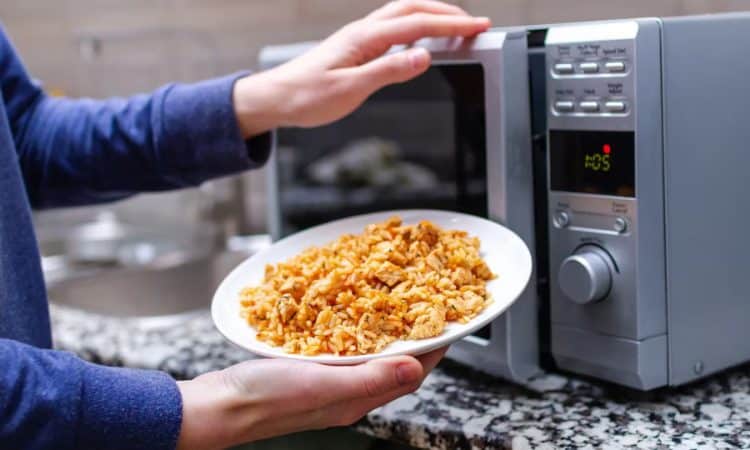
We all love our microwave ovens! They’re so handy for heating, defrosting and cooking food quickly and efficiently, aren’t they? Just a little bit of advice though, there are certain foods that aren’t allowed or need to be cooked with a few extra precautions to avoid any health and safety problems.
Which foods cannot be reheated in a microwave oven
As explained by experts from the Organization of Consumers and Users (OCU), there are foods that are not recommended for reheating in the microwave because of the risk involved:
- An egg with shell: it can explode due to the accumulation of steam inside. It is advisable to do it without the shell or to boil it.
- Green leafy vegetables: they could produce sparks if heated dry.
- Tomato sauces: when overheated too much, they start to explode and dirty the microwave due to their thickness.
- Grapes: they can produce sparks and fire, creating a glowing plasma.
- Seed bags: there is a danger of overheating or catching fire if the instructions are not followed to the letter.
In addition, according to a study in the American Journal of Epidemiology, heating slightly raw meat in the microwave can cause various health problems. Therefore, it is best to try to cook meat thoroughly using other methods, such as a frying pan , and then reheat it if desired.
The six places where you should never plug in a microwave oven
- Near other large appliances: proximity to refrigerators, dishwashers or stoves can interfere with the microwave’s performance and affect its lifespan.
- Under cabinets or low shelves: lack of clearance above the microwave makes proper ventilation difficult and can cause overheating.
- Tight spaces: placing the microwave in areas that are too narrow or enclosed may prevent proper ventilation.
- Damp areas: placing it near the sink or in areas prone to liquid spills can damage electronic circuits due to excessive moisture.
- Near sensitive electronic devices: proximity to televisions, stereos or computers may interfere with their operation due to electromagnetic interference.
- On the stove top: the heat and steam generated by cooking can affect microwave performance and shorten the life of the microwave.
In addition, as explained by the FDA (U.S. Food and Drug Administration), there are four safety recommendations to avoid problems with your microwave:
- Use suitable containers, avoiding metal and certain plastics.
- Avoid heating water beyond its boiling point to prevent explosions.
- Check the microwave for radiationleaks.
- Do not use a microwave that operates with the door open.
In case the microwave sparks, the specialists of the House of Appliance say that it may be because you have included some metal or aluminum to reheat inside, which goes against its usual operation.
What happens if the microwave does not turn on
According to specialists from the House of Appliances, if a microwave does not turn on, the problem is related to the power outlet. First, you need to make sure that the power cord is properly connected to the electricity. If the outlet has a power switch, it is important to verify that it is turned “on”.
If there is any doubt about the electrical current and whether power is available, the microwave should be unplugged and another device plugged in. If this device works, plug the appliance into another outlet and try it again.
If it still does not work, a fuse may have blown or the circuit breaker may have tripped.

